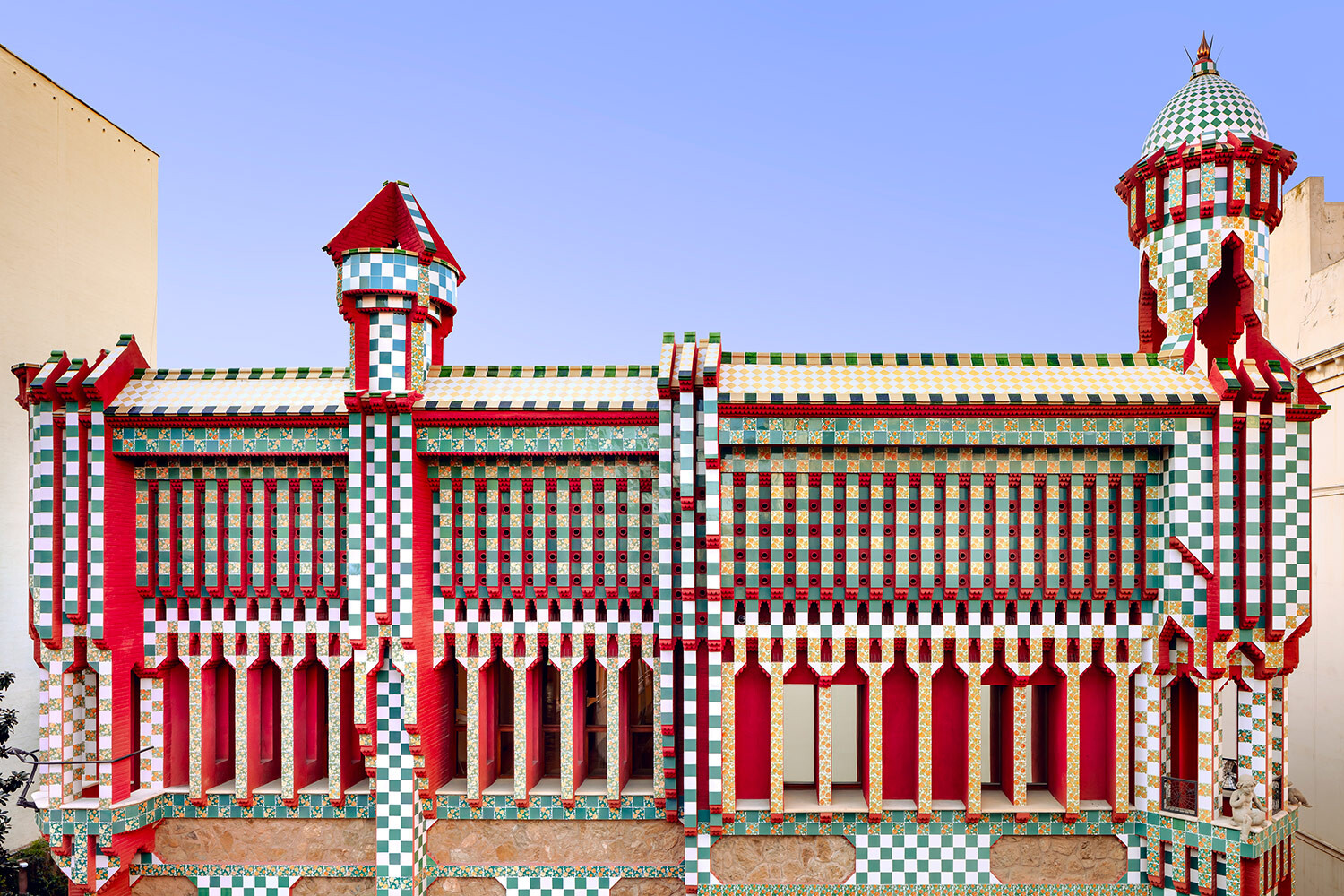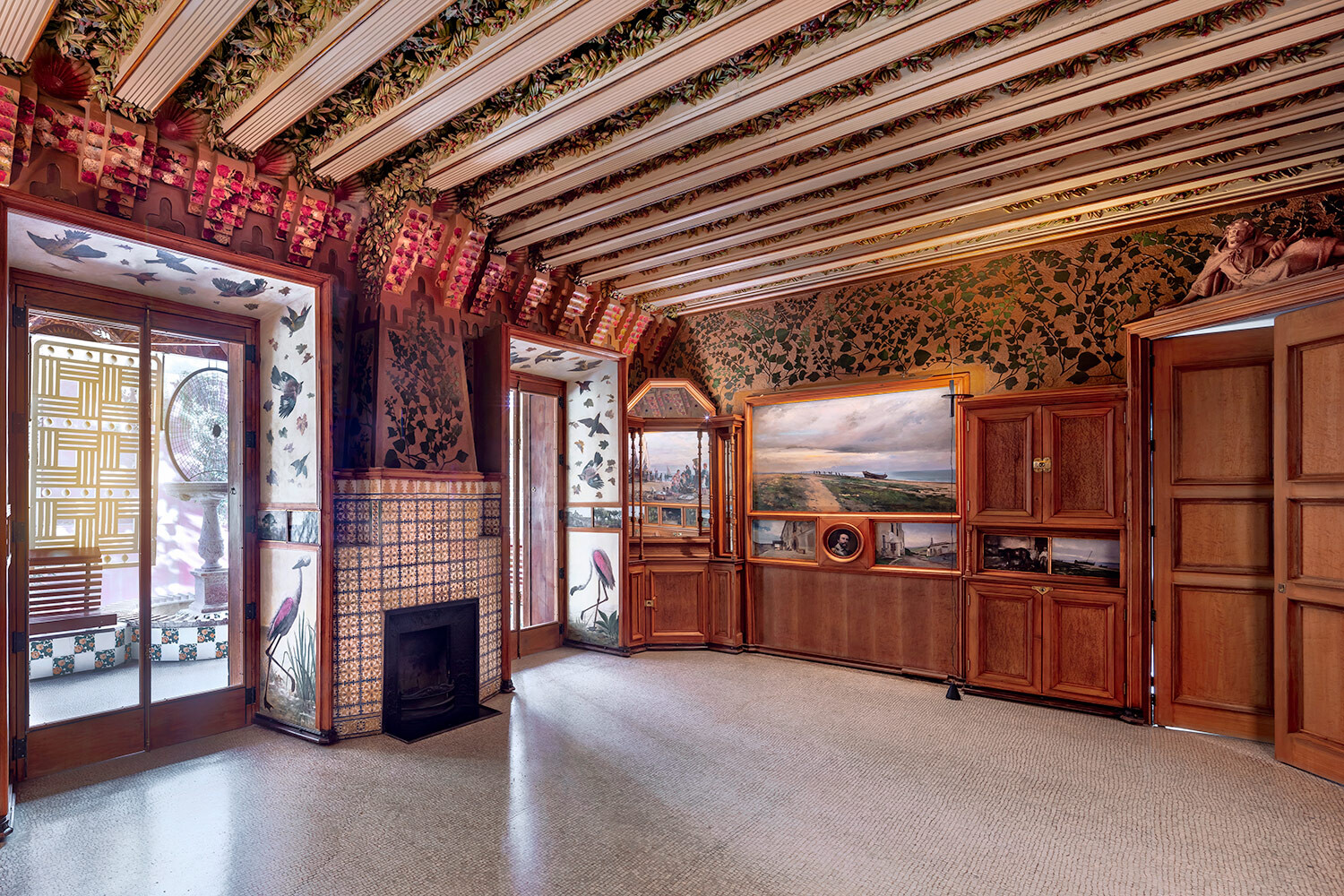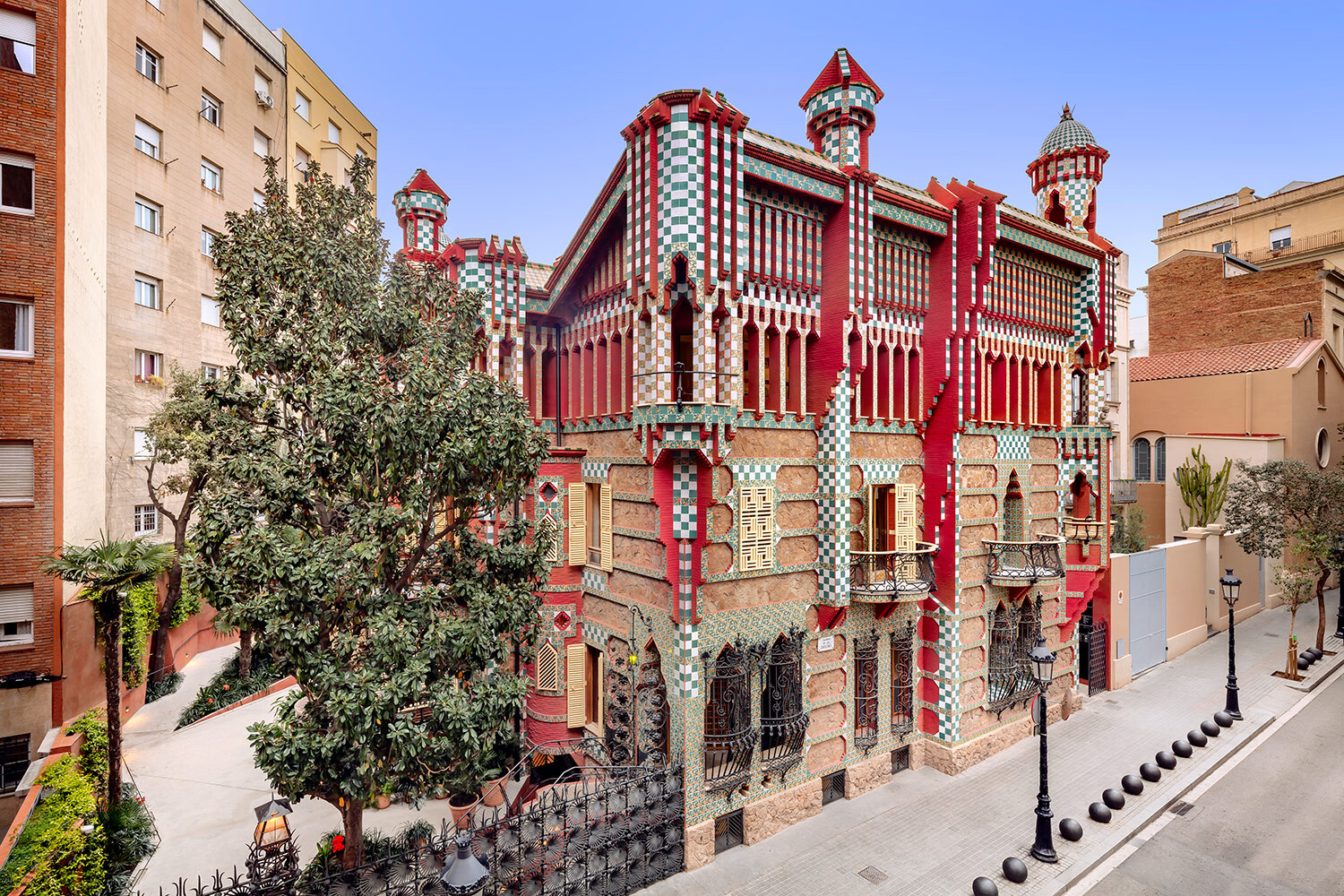Getting Closer to Gaudí: CASA VICENS interview with Ricardo Mora
07 Sep 2023Considered to be Antoni Gaudí's first major project, Casa Vicens is a Barcelona gem that offers a uniquely intimate architectural experience. We were able to visit the masterpiece during our art trip to Barcelona and take in its charm first-hand.
Now, we have taken the time to interview Cultivist member Ricardo Mora, who was a part of the team that oversaw the very recent renovations, about the new state of the space, its relation to the area, future plans for Casa Vicens and more.
How daunting a task did it seem at first, if at all? From an architectural standpoint and mentally (since you were going to be taking care of Guadí’s first masterpiece & a UNESCO World Heritage Site)?
It is logical that the restoration of a historic building of these characteristics presents challenges and difficulties that may seem daunting at the beginning of the process, but that makes the restoration work much more interesting. Casa Vicens is a Gaudí masterpiece and its restoration required a meticulous and respectful approach to preserve its authenticity and original beauty.
I’m curious to know what were the biggest challenges. Was there opposition from outside parties, difficulty in decision processes, or timing constraints?
The rehabilitation presented several challenges, mainly due to the age and state of preservation of the building. One of the most important was the restoration of original elements. Casa Vicens underwent modifications over the years and some original elements were lost or altered. The challenge was to identify and restore these elements, such as tiles, moldings and wrought iron structures, to restore them to their original appearance. In addition, the building presented stability and deterioration problems in some areas. It was necessary to carry out structural consolidation work to ensure the safety and integrity of the building, without compromising its original design and features.
It was also necessary, in order to carry out a rehabilitation faithful to the history and original design of Casa Vicens, to conduct exhaustive research on the architecture and materials used at the time of its construction. This involved studying historical documents, photographs and other resources to better understand Gaudí's vision and his original intention for the building.
At the facility level, an interesting integration effort was also undertaken. Casa Vicens was built at a time when modern installations, such as electricity and plumbing, were not common. During the rehabilitation, these facilities had to be discreetly integrated to meet today's standards of comfort and functionality, without affecting the aesthetics and integrity of the building.
Finally, coordination with the authorities and experts in conservation and restoration was to be a very fine task.
What do you think the building means to the Gràcia neighbourhood specifically? And how do you think its significance differs today vs. in the late 1800s when Gràcia was still its own village?
Casa Vicens has become a meeting and reference point for the residents of the neighbourhood. It is common to see people gathering in its surroundings, enjoying the nearby public spaces and taking advantage of the beauty and tranquillity that the house offers. In addition, its presence in the neighbourhood facilitates orientation and location for residents and visitors.
As a cultural heritage, Casa Vicens is considered an architectural jewel and an important cultural heritage of the city. Its unique design and historical importance make it a symbol of the neighbourhood and a point of reference for residents and visitors. In addition, the presence of Casa Vicens in the neighbourhood of Gràcia generates a sense of identity and pride among residents. It is a reminder of the rich history and architectural heritage of the area and has become an emblem of the neighborhood's cultural identity.
It attracts numerous tourists and visitors from all over the world. This has a positive impact on the neighbourhood, as it generates economic activity and promotes the development of local tourism. Also, the presence of visitors in the neighbourhood contributes to the vitality and diversity of the area and promotes interest and appreciation of art and architecture among residents and visitors. In addition, the house is used for exhibitions and events related to art and culture, which enriches the cultural life of the neighbourhood.
In the 19th century, Casa Vicens had a more localized significance and was considered primarily as a private residence for the owner's family. Its importance and recognition were more limited to the local level, as a symbol of the economic and social status of that family, but had nothing to do with its current international recognition as a World Heritage Site.
Have you discovered something new about Guadí through getting to know the house, or perhaps you learned something about yourselves?
Sure. Perhaps the most interesting thing we can learn from it is the evolution of his style. Casa Vicens was built in the early years of Gaudí's career, which allows us to observe how his architectural style evolved over time. We can see elements that would later become hallmarks of his later works, such as the use of organic forms, the integration of nature into the design, and attention to detail.
We can also discover his early experimentation with materials and techniques: In Casa Vicens, Gaudí used bricks, ceramics, wrought iron and other local materials to create a solid and beautiful structure. In addition, he employed traditional craft techniques and combined different architectural styles to achieve an innovative design.
We can also identify his cultural influences through the Vicens house, such as the Mudejar style. Gaudí was inspired by nature and traditional elements of the region to create a unique and authentic design. This connection with the local culture is a recurring feature in Gaudí's works.
How do you maximize the outdoor space you have left? Just how important are those preserved trees?
The outdoor space is designed to make the most of the natural beauty and create a pleasant environment for visitors. Casa Vicens has a beautiful garden surrounding the house, designed with a variety of plants and trees, creating a calm and serene environment. Visitors can stroll along the garden paths and enjoy the vegetation and flowers.
There is also a large terrace at the back of the house that offers panoramic views of the garden and is a perfect place to relax and enjoy the outdoors. Visitors can sit on the stone benches and enjoy the tranquillity of the surroundings. It also has an interior courtyard that is located in the centre of the house and is surrounded by columns and has a fountain in the centre. It is a quiet and cool space where you can relax and admire the architecture of the house. Throughout the garden and terrace, several seating areas with benches and chairs have been created. These spaces are strategically located so that visitors can sit and enjoy the beauty of the surroundings.
What are your favourite things about the house? What’s something only someone very familiar with the space would know?
Each room has its own charm and personality, which makes exploring the house a fascinating experience. However, if we have to pick a favourite space, this would perhaps be the grandstand. It is located on the first floor of the house and is a space that combines unique architectural and decorative elements. It is designed in a Mudejar style, which is a fusion of Islamic and Christian architectural influences. This combination is reflected in the horseshoe arches, carved wood details and colourful tiles that adorn the walls and ceiling. One of the most striking aspects of this room is its wooden ceiling, which is decorated with an intricate design of stars and flowers. This ceiling is a testament to the talent and skill of the craftsmen who worked on the construction of the house. The grandstand also has large windows that allow natural light to enter, creating a bright and welcoming atmosphere. These windows are decorated with stained glass windows, which add a touch of beauty and elegance to the space.
Since it was originally conceived as a summer residence, does it still live up to that purpose? If so, what special qualities does it have in the summer?
No, currently and since its restoration, it is open to the public as a house museum. But originally, La Casa Vicens had several qualities that made it ideal as a summer residence: The house is located in the Gràcia district of Barcelona, in a quiet, residential area. This made it a refuge away from the hustle and bustle of the city centre, offering a more relaxed atmosphere conducive to rest. In addition, its colourful and ornate facade, as well as its decorative details inspired by nature, created a visually attractive and stimulating environment. The aforementioned open-air spaces made it possible to enjoy the Mediterranean climate and make the most of the sunny summer days. These spaces also offered the possibility of organizing outdoor gatherings and enjoying moments of relaxation in the open air.
The house had large rooms, bright and airy spaces, and a layout that allowed for good air circulation. In addition, quality materials and attention to detail were used to ensure a pleasant and welcoming experience.
Do you have any future plans for the space?
Many very interesting ones. Casa Vicens will continue to organize temporary exhibitions and events related to art, architecture and culture. These activities will allow visitors to explore different aspects of Gaudí's legacy and enjoy enriching experiences.
Casa Vicens is committed to promoting research and education in the field of architecture and Catalan modernism. Educational programs, lectures and workshops will be held to foster knowledge and appreciation of Gaudí's work and its historical context.
It will also continue to dedicate resources to the conservation and maintenance of the building to ensure its long-term preservation. This includes the protection of the original elements, ongoing restoration and the implementation of appropriate conservation measures.
Collaborations and partnerships with other cultural and architectural institutions will be sought to promote research, knowledge sharing and dissemination of Gaudí's legacy. This may include traveling exhibitions, joint projects and exchange programs.
And, of course, it will continue to enhance the visitor experience by offering additional services and amenities, such as audio guides, guided tours and interactive activities. The goal is to provide visitors with an enriching and memorable experience.
One sentence that would convince a random person to visit:
"Discover the architectural genius of Antoni Gaudí at Casa Vicens, a masterpiece that will transport you to a world of beauty, innovation and creativity. Don't miss the opportunity to marvel at its unique design and immerse yourself in the history and legacy of one of the most influential architects of all time. Visit Casa Vicens and be captivated by the magic of Gaudí!"
If someone was at Casa Vicens and wanted to spend the day in the area, where should they go?
Near Casa Vicens, there are several interesting places for Gaudi and modernist architecture lovers: Parc Güell, another Gaudi masterpiece, is only a 15-minute walk from Casa Vicens. This park features impressive architectural structures, beautiful gardens and panoramic views of the city of Barcelona. The Sagrada Familia is located about 5-10 minutes away by cab. This impressive church is a symbol of Barcelona and a must-see for architecture lovers. Casa Milà or La Pedrera is about the same distance. This modernist building, designed by Gaudí, is famous for its undulating facade and impressive rooftop with sculptural chimneys. And just across the street is Casa Batlló, another Gaudí masterpiece. This modernist house is known for its colorful facade and unique interior design. Finally the Ciutadella Park, another 10 minutes away by cab, where you can enjoy beautiful gardens, lakes, fountains and visit the famous Arc de Triomphe.
How important is Gaudí’s work to architecture?
Very much so. Gaudí broke with the conventional architectural styles of his time and developed his own unique style, such as the use of organic forms, the integration of nature into architecture and attention to detail. His innovative approach and boundless creativity have influenced generations of architects and left a lasting mark on the history of architecture.
He had a deep connection with nature and believed in the importance of integrating architecture with the environment. His designs are inspired by the form and structure of natural elements, such as trees, plants and animals. This harmonious integration with the surrounding environment has been a major influence on sustainable and ecological architecture.
Gaudí was a pioneer in the use of innovative building materials and techniques. He used local materials such as bricks, ceramics and wrought iron, and experimented with their manipulation to create unique forms and structures. In addition, he developed his own construction techniques, such as trencadís (mosaic of ceramic fragments), which have become distinctive characteristics of his style.
Gaudí was not only limited to architecture but was also involved in other aspects of design, such as furniture, lighting and interior decoration. His holistic and multidisciplinary approach allowed him to create coherent and harmonious spaces in all aspects. This holistic vision has influenced contemporary architecture and has demonstrated the importance of considering all elements in the design of a space.
– Words by Gideon Fortune





